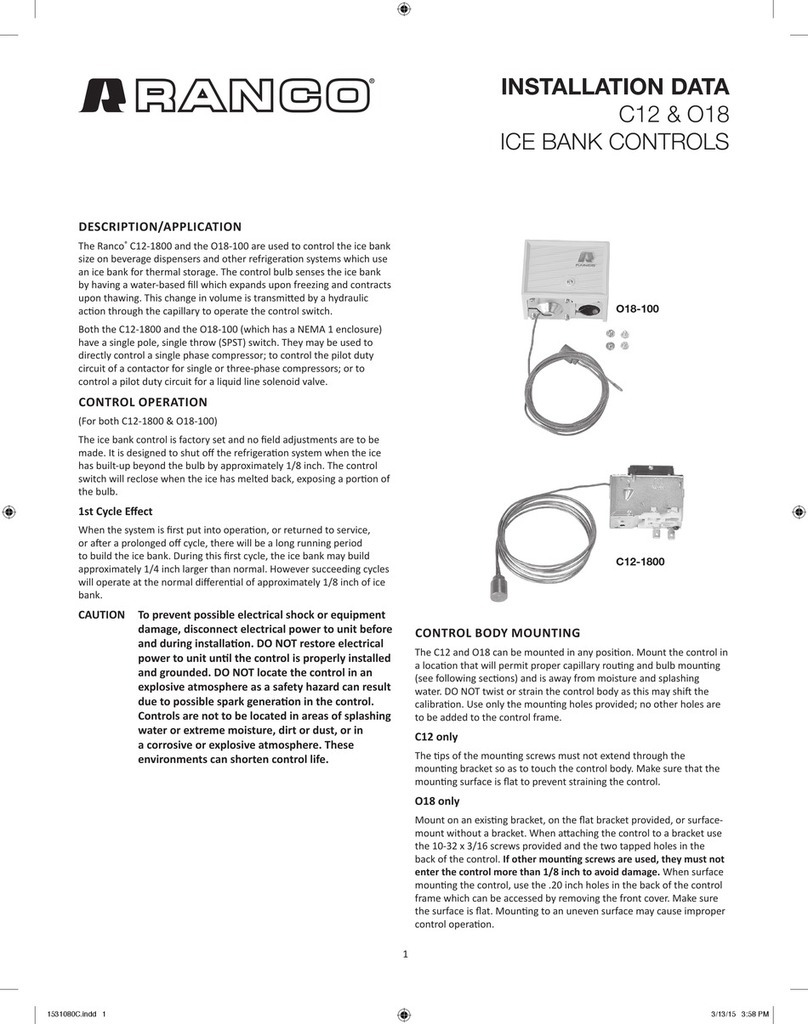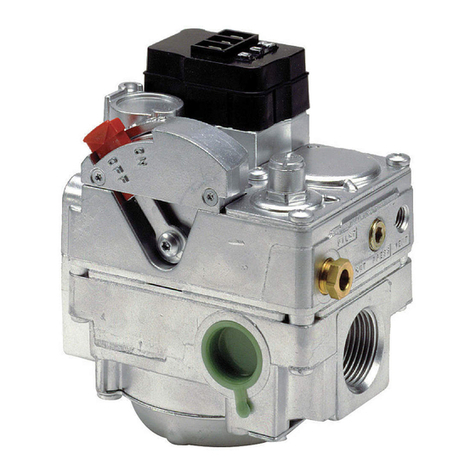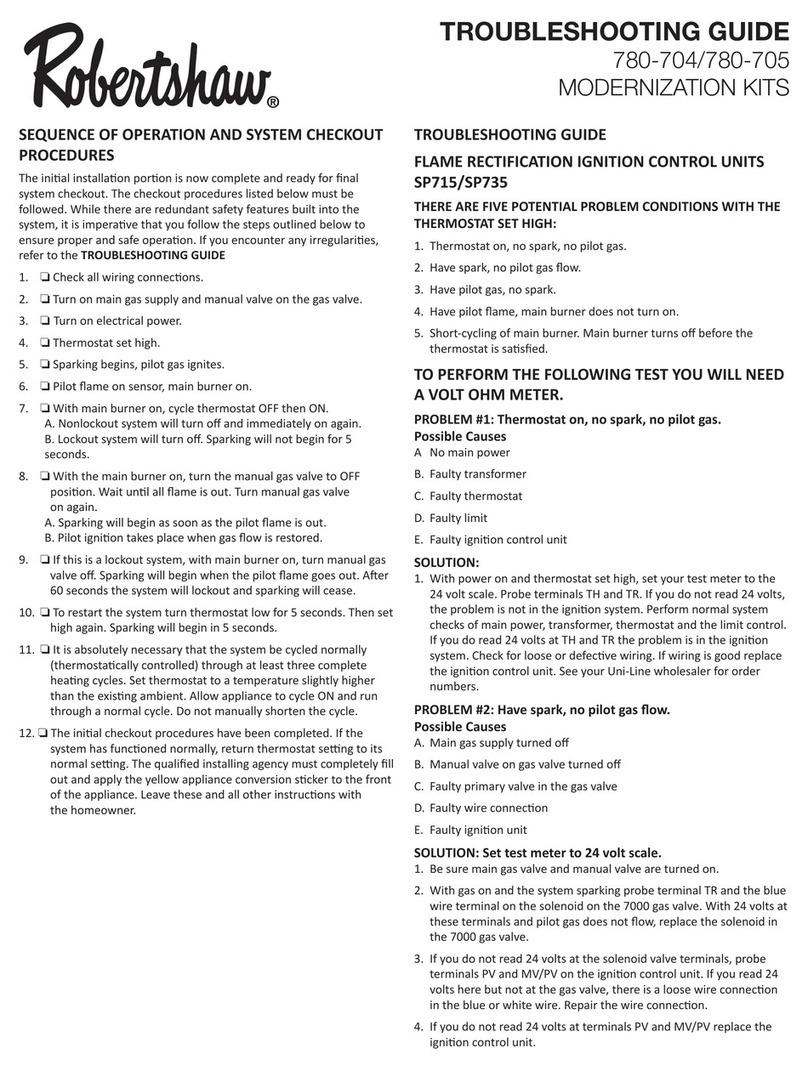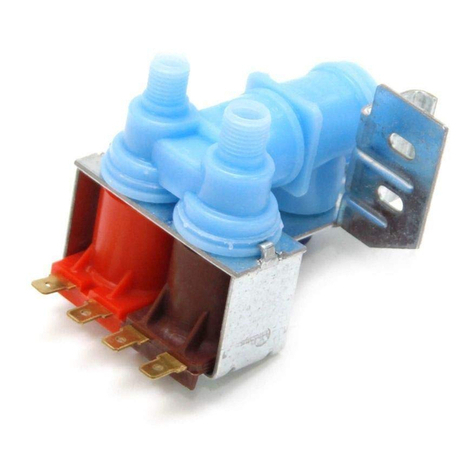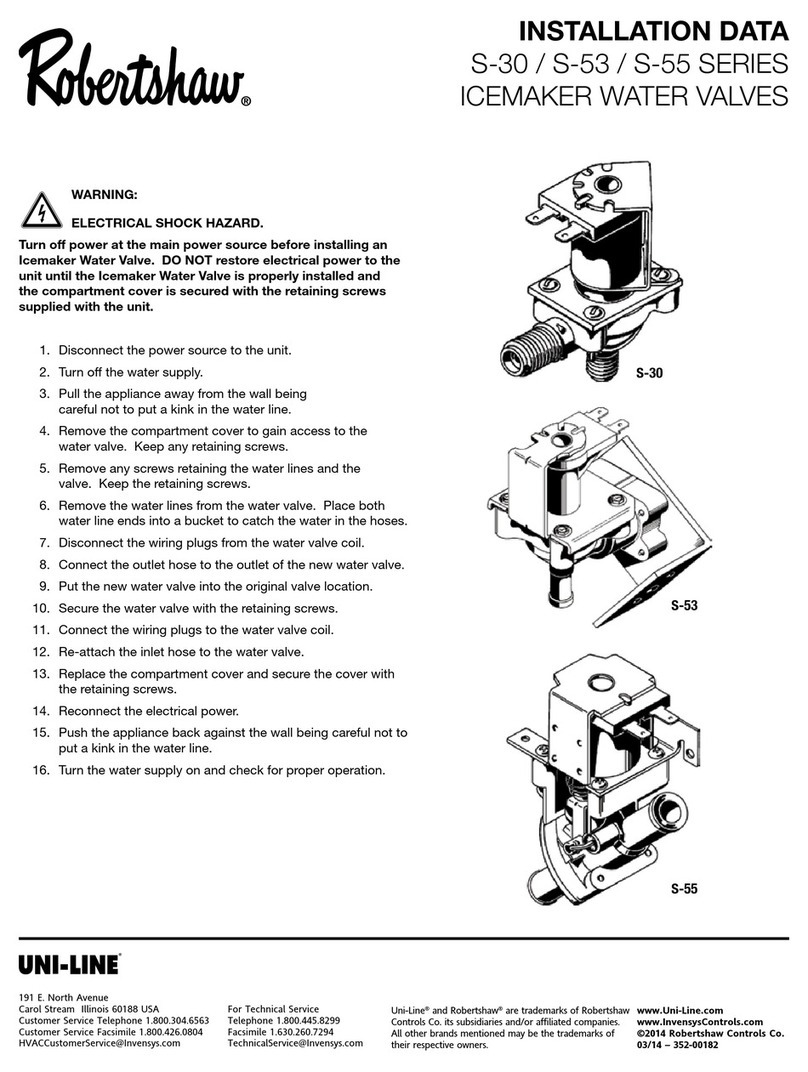
5
CAUTION
1. WARNING: If you do not follow these instrucons exactly, a re
or explosion may result with property damage, per sonal injury
or loss of life.
2. Smell all around the appliance area for gas. If the appliance
uses L.P. (boled) gas, also be sure to smell next to the oor
because L.P. gas is heavier than air.
3. WARNING: If you smell gas, immediately shut o the manual
valve in the gas piping to the appliance. Don’t touch any elec-
trical switch or use the phone. Leave the building and call your
gas supplier. If he cannot be reached, call the re department.
4. WARNING: Do not force the gas control knob on the appliance.
Use only your hand to push down and/or to turn the gas control
knob. Never use any tools. If the gas control knob will not
operate by hand, the control should be replaced by a qualied
service technician. Force or aempted repair may result in re
or explosion.
5. WARNING: The gas control must be replaced if it has been
exposed to water.
OPERATING INSTRUCTIONS
SERVICE INSTRUCTIONS
CAUTION: If control has been exposed to water in any way, it must be
replaced. If gas valve fails to shut o, do not turn o electrical power.
Turn o gas supply allowing fan or circulang pump (if so equipped) to
connue running unl system has cooled. Replace control.
WARNING
Servicing of gas controls, appliance and systems must
be per formed by qualied service personnel only.
PRESSURE REGULATOR ADJUSTMENTS
Adjustment of the pressure regulator is not normally necessary since
it is preset at the factory. However, eld adjustment may be accom-
plished as follows:
NOTE: Manometer aachment may be accomplished at pressure tap
plug, above control outlet, as shown in gure to the right. If using inlet
pressure tap to measure incoming pressure. See drawing on rst page.
1.
Manometer or gauge aachment may be accomplished at pres sure
tap plug (D).
2. Remove regulator adjustment screw cap (top of control - A).
3. With small screwdriver, rotate adjustment screw (B) “clockwise” to
increase, or “counterclockwise” to decrease pressure to comply with
manufacturer’s specicaons.
4. Replace regulator adjustment screw cap (A).
REGULATOR CONVERSION
CAUTION: Main burner and pilot orices must be changed when regu-
lator is converted from one type of gas to another.
1. Turn o gas and electricity to appliance.
2. Remove sloed cap (A), adjusng screw (B), and natural gas spring -
not color coded - (C), from control.
3. Install new L.P. spring - color coded with a black strip.
4. Install new adjusng screw (B).
5. Aach manometer or pressure gauge at the outlet pressure tap. (D)
1. Turn wall thermostat to its lowest seng. Remove burner access
panel(s).
Selector arm must only be operated by hand (see below). DO NOT
use pliers, wrenches or other tools to operate the arm. The selector
arm cannot be moved into the “O” posion without rst depress-
ing the lever to the ”On” posion.
2. Move selector arm to the “O” posion. (See gure 1.)
3. WARNING: Wait at least 5 minutes to allow any gas in the
combuson
chamber to vent. If you then smell gas in the appliance area or near
the oor, STOP and follow warning instruc ons to the le. Failure to
do so may result in re or explosion.
4. Move selector arm to the “On” posion, (see gure 2), and set room
thermostat to desired temperature. Allow burner to cycle on and o.
5. Leak test with a soap soluon aer installing with main burner on.
Coat pipe and tubing joints, gasket, etc. with soap soluon. Bubbles
indicate leaks.
6. Replace burner access panel.
6. Turn gas and electricity on.
7. Turn room thermostat to call for heat.
8. With burner on, adjust screw (B) to supply LP. gas to pressure as
recommended by the appliance manufacturer.
9. If adjusng screw (B) reaches its maximum depth (booms out)
before recommended pressure seng is reached, turn screw
counterclockwise unl pressure drops slightly (approximately 0.1”
W.C.) WARNING: Do not stretch or alter spring.
10. Turn o gas and electricity to appliance.
11. Remove manometer or pressure gauge and reinstall pressure tap
outlet plug (D).
12. Install new red sloed cap in place of (A).
13. Turn gas and electricity on.
14. With burner operang, immediately check all ngs for leaks with
soap soluon. Bubbles indicate leaks that must be corrected.
15. Aach label to show control has been converted to L.P.
16. Set room thermostat to desired temperature.
FIGURE 1 FIGURE 2
